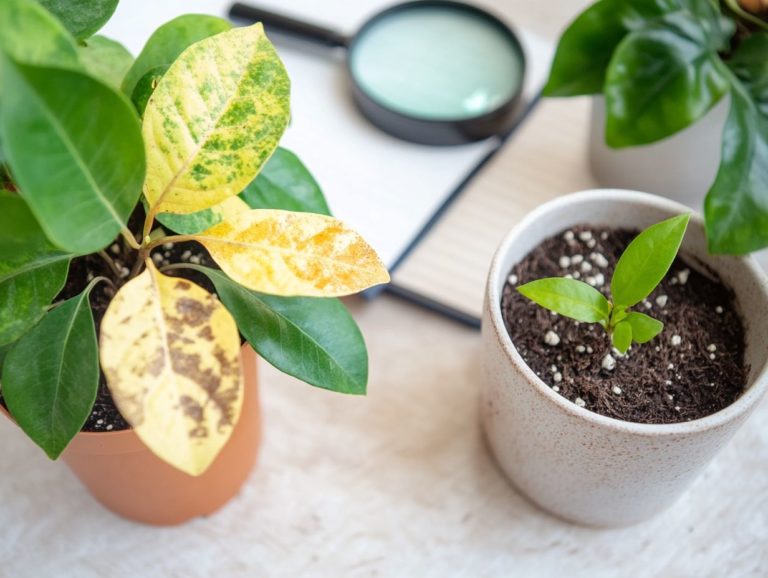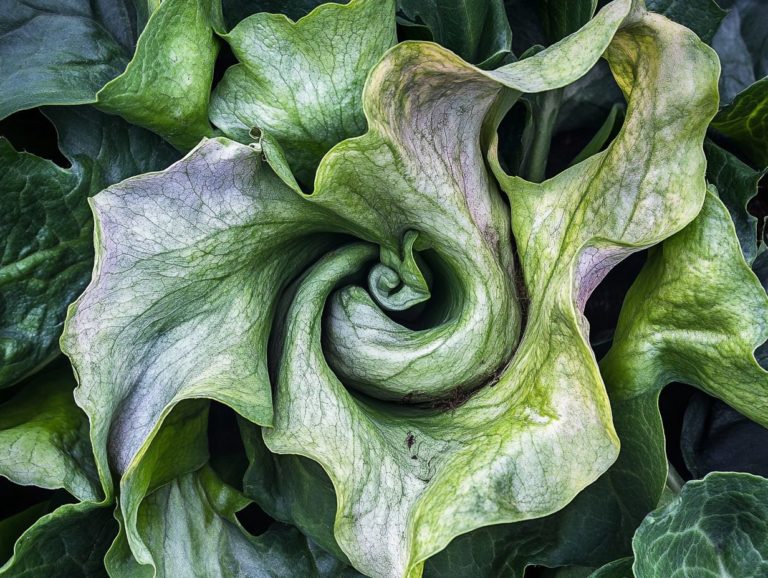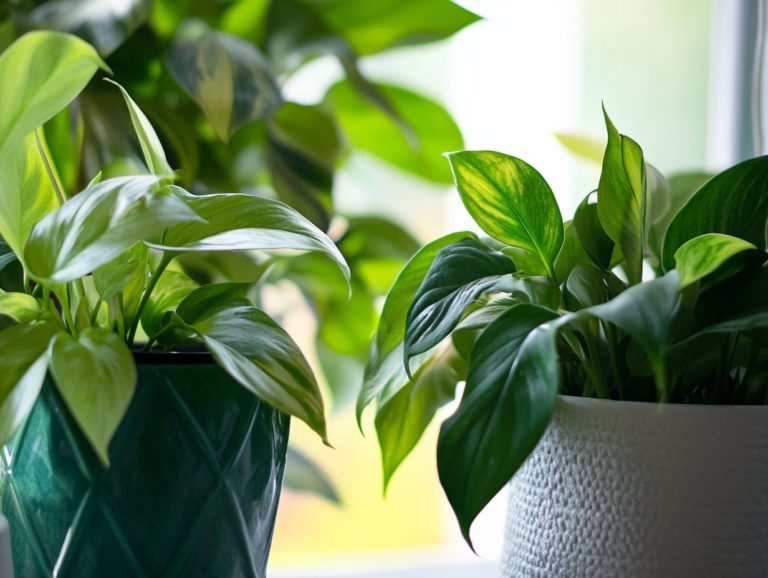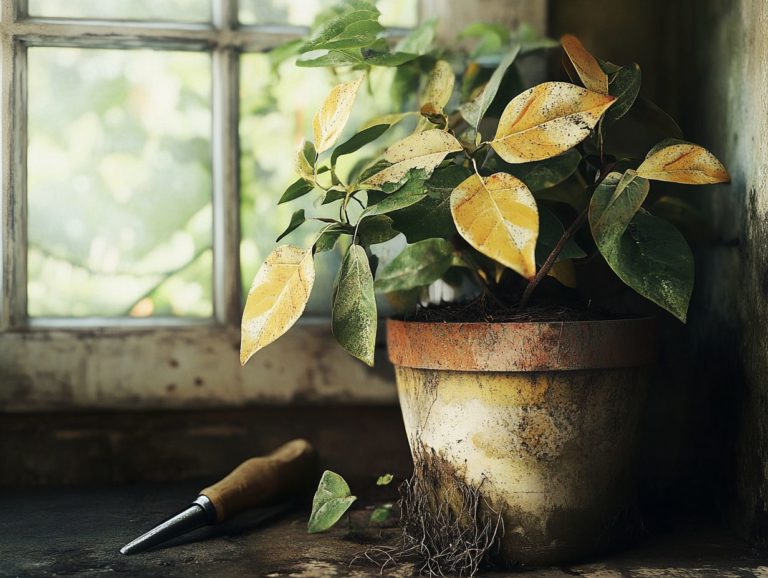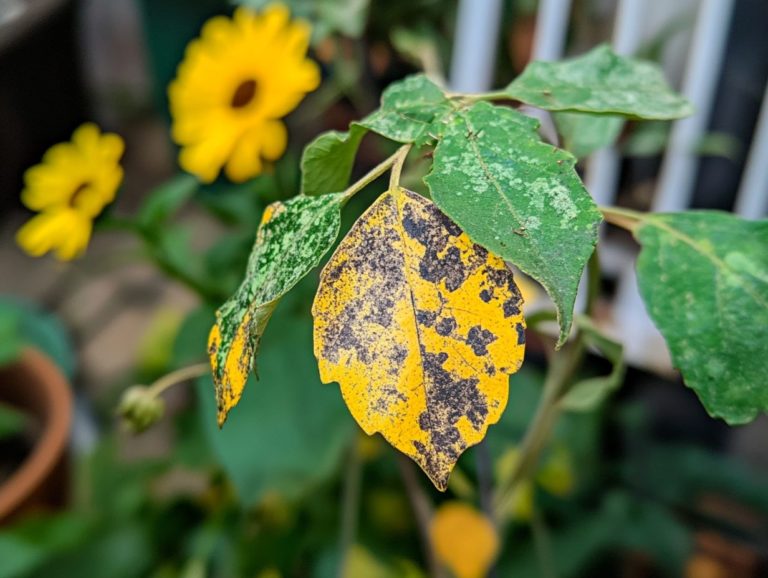Common Symptoms of Indoor Plant Overcrowding
Indoor plants can bring life to your space, but overcrowding can swiftly transform that lush oasis into a chaotic jungle.
Recognizing the causes and signs of overcrowding is crucial for keeping your plants healthy and thriving. Get ready to explore the visual cues that suggest your greenery might be too cozy for comfort, the adverse effects this can have on their health, and practical strategies to manage and prevent overcrowding.
You’ll also discover tips for selecting the right plants based on your specific living environment.
Dive in to ensure your indoor garden flourishes!
Contents
Key Takeaways:
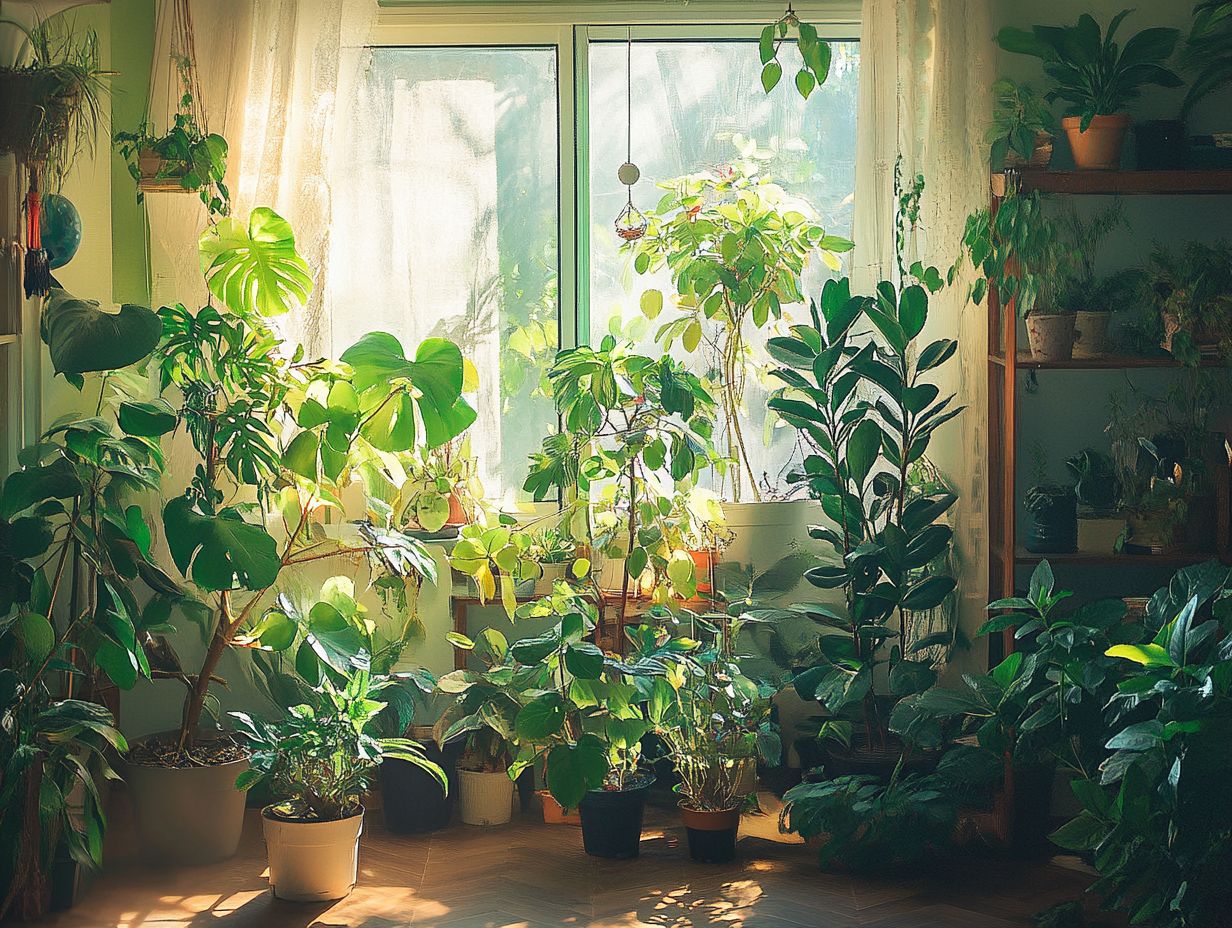
- Overcrowding can negatively impact indoor plant health and growth, so it’s important to recognize the signs early.
- Visual cues such as stunted growth and yellowing leaves are common indicators of indoor plant overcrowding.
- To prevent overcrowding, carefully select plants that are suitable for your space. Regular maintenance and pruning are also essential.
Understanding Indoor Plant Overcrowding
Understanding indoor plant overcrowding is crucial for any dedicated plant parent striving to maintain healthy greenery. Overcrowding affects the overall health and specific cultural needs of various houseplants.
It happens when plants are nestled too closely together, creating fierce competition for essential resources like light, soil quality, air circulation, and nutrients. Recognizing and addressing these challenges is vital; doing so will greatly enhance the proper environment of your indoor garden, allowing it to flourish beautifully.
What Causes Indoor Plant Overcrowding?
Indoor plant overcrowding often stems from inadequate care. Issues like insufficient spacing, overwatering, and neglecting to repot can leave your plants with roots that are too tightly packed and nutrient-deficient.
Not planning carefully when planting can lead to incompatible plant types squabbling for resources in the same pot. This competition can result in one plant overshadowing another, limiting access to sunlight and air, which are crucial for healthy growth. This can also exacerbate common diseases such as powdery mildew.
Failing to repot your plants as they outgrow their containers can restrict their root systems. When roots become tightly packed, air circulation suffers, disrupting moisture levels and heightening the risk of fungal infections.
These cumulative challenges not only stress your plants but can also compromise their overall health, resulting in stunted growth and a shorter lifespan.
Signs of Overcrowding in Indoor Plants
Identifying the signs of overcrowding in your indoor plants is essential for preserving their health and avoiding further complications. Common symptoms to watch for include:
- Wilting leaves
- Yellowing foliage
- Leaf drop
- Emergence of leaf spots
These indicators signal stress and competition for resources among your plants, which, if left unchecked, can lead to serious issues down the line.
Visual Cues to Look For
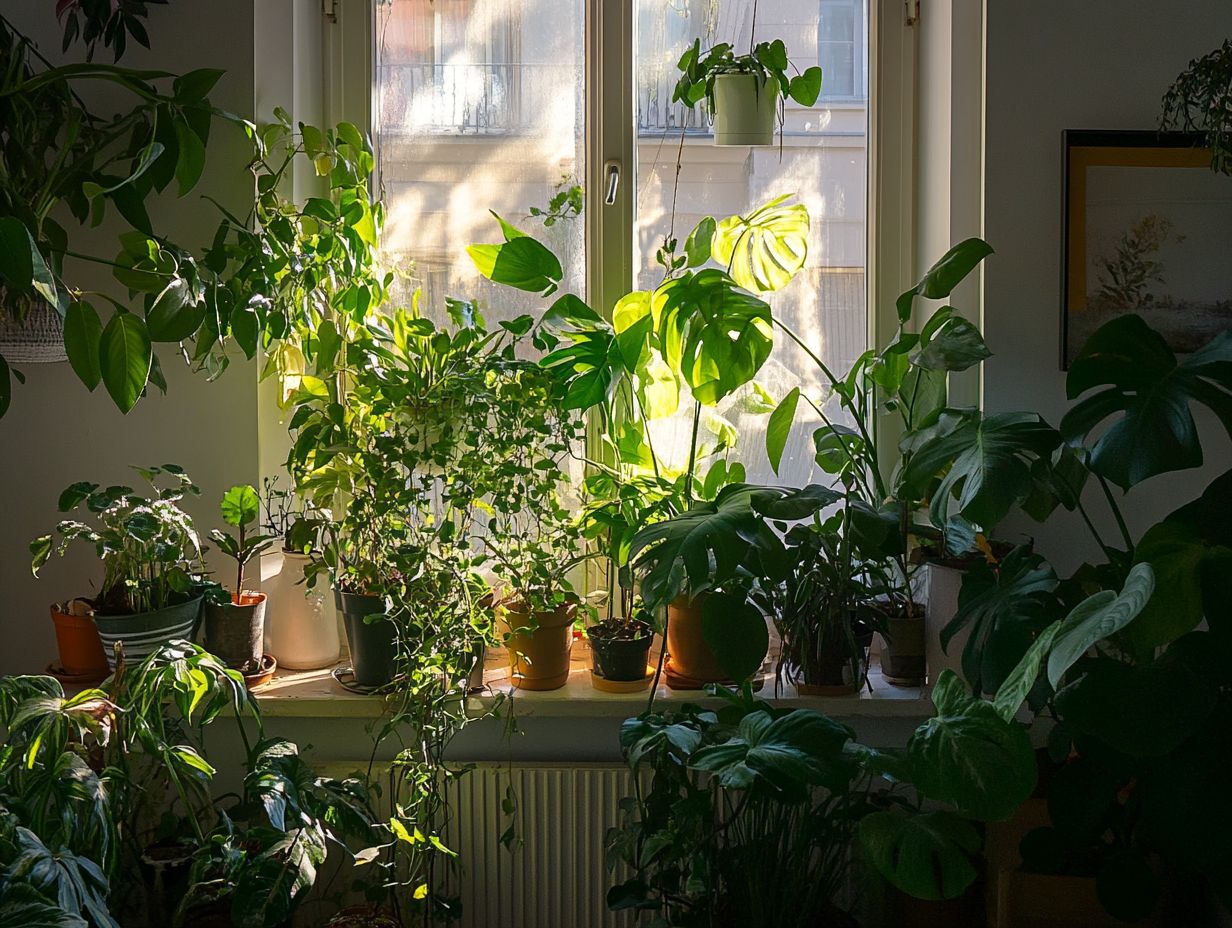
Visual cues like leaf spots, crown rot (a condition caused by too much moisture), and gray mold are telltale signs of overcrowding in indoor plants. These symptoms reveal their battle for sufficient light and air circulation, which can lead to root rot and other disease symptoms.
These symptoms demand your immediate attention and unveil the complexities of your plant care routine. For example, leaf spots might indicate not only overcrowding but also humidity issues or watering missteps. To learn more about this, check out the top signs of indoor plant overcrowding. On the other hand, crown rot signals a need for better potting methods.
By keenly observing these signs, you can easily differentiate between a thriving plant, boasting lush green leaves and a balanced shape, and one that s gasping for breath and struggling. Understanding these visual cues enables you to make informed choices that can significantly boost the vitality of your green companions.
Take these tips to heart, and watch your indoor garden thrive!
Effects of Indoor Plant Overcrowding
The consequences of overcrowding your indoor plants can be quite detrimental to their health. It can lead to a heightened vulnerability to fungal diseases, stunted growth, and challenges in disease prevention. All of these factors jeopardize the well-being of your indoor garden.
Impact on Plant Health and Growth
The impact of overcrowding on plant health and growth can lead to stunted development, poor flowering, and increased watering challenges. Your plants vie for limited resources like light and air circulation, often resulting in nutrient deficiency.
For example, imagine a garden brimming with densely packed tomato plants; the competition for sunlight might cause those stems to stretch and yield fewer fruits, ultimately diminishing your harvest. Similarly, if you have crowded herbs like basil, they could end up leggy from the lack of airflow, making them more vulnerable to diseases.
To keep an eye on plant health, regularly check the leaves for any signs of yellowing, which can indicate insufficient light or nutrient deficiencies. Adjusting your care strategies could involve thinning out plants, repositioning them for better light exposure, or even tweaking watering schedules to ensure that each plant receives the moisture it needs without getting overwhelmed by the competition.
You Can Effectively Tackle Indoor Plant Overcrowding
You can effectively tackle indoor plant overcrowding by using simple strategies such as repotting, ensuring proper drainage, and conducting regular plant monitoring. These practices will boost your plants health and help you dodge future pest problems.
Strategies for Managing and Preventing Overcrowding
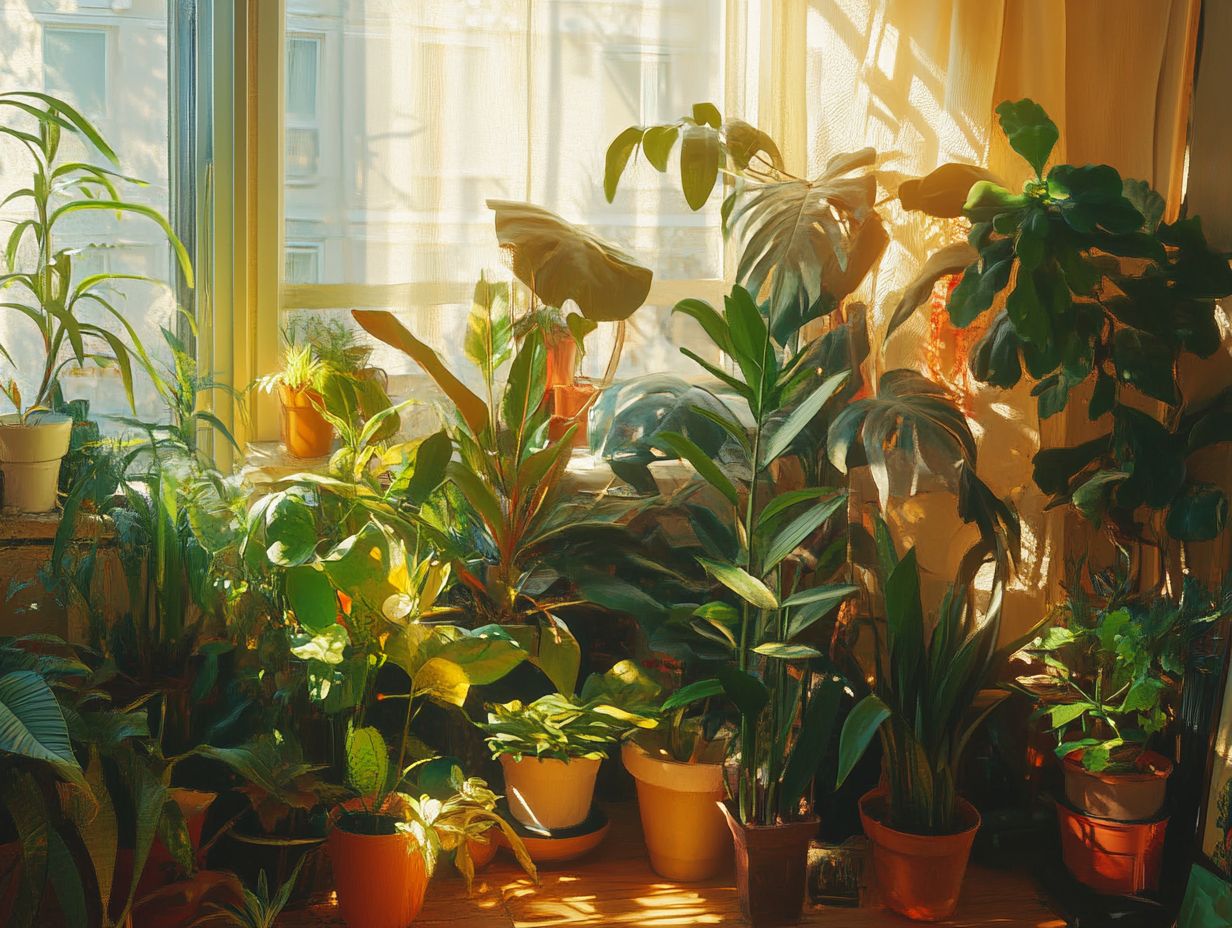
Manage and prevent indoor plant overcrowding by adjusting your plant s environment, perfecting your watering techniques, and transitioning to larger pots to ensure your plants thrive.
You should first assess the environmental conditions of your indoor space.
Start by evaluating temperature fluctuations, aiming to keep it within the ideal range for your specific plants usually between 65 F to 75 F for most houseplants. Monitoring humidity levels is also crucial; consider using a humidity meter (hygrometer) to measure moisture in the air. Adding a simple pebble tray beneath your pots can boost humidity when necessary.
Practicing careful watering techniques like allowing the soil to dry slightly between waterings will help prevent root rot, a common issue with overcrowded plants. When you notice signs of overcrowding, such as stunted growth or yellowing leaves, it’s wise to think about transferring your plants to larger, more spacious pots. Additionally, keeping an eye out for common symptoms of indoor plant shock can help you address any issues early on. This transition not only provides roots with room to expand but also enhances airflow, which is vital for healthy growth and overall vitality.
Choosing the Right Plants for Your Space
Selecting the ideal plants for your space requires a thoughtful assessment of light availability, soil quality, and the overall environmental conditions. By carefully considering these factors, you can create an inviting environment where your indoor plants flourish while avoiding the pitfalls of overcrowding.
Factors to Consider When Selecting Indoor Plants
When selecting indoor plants, it s essential to consider factors like light exposure, humidity levels, and the potential for overcrowding to cultivate a harmonious indoor environment that minimizes the risk of pest problems.
Understanding light exposure is particularly crucial as different plants have their own unique requirements. For example, succulents like jade plants thrive in bright, indirect sunlight, while ferns prefer the gentler embrace of lower light conditions. Humidity is another key player, especially for species such as peace lilies and calatheas that flourish in moist surroundings.
To ensure optimal growth, it s wise to monitor humidity levels with a humidity meter and think about placing a humidifier in drier spaces. Grouping your plants together can also enhance humidity through transpiration (the process plants use to release moisture into the air), creating a delightful microclimate that encourages lush, vibrant growth.
Frequently Asked Questions
What are the common symptoms of indoor plant overcrowding?
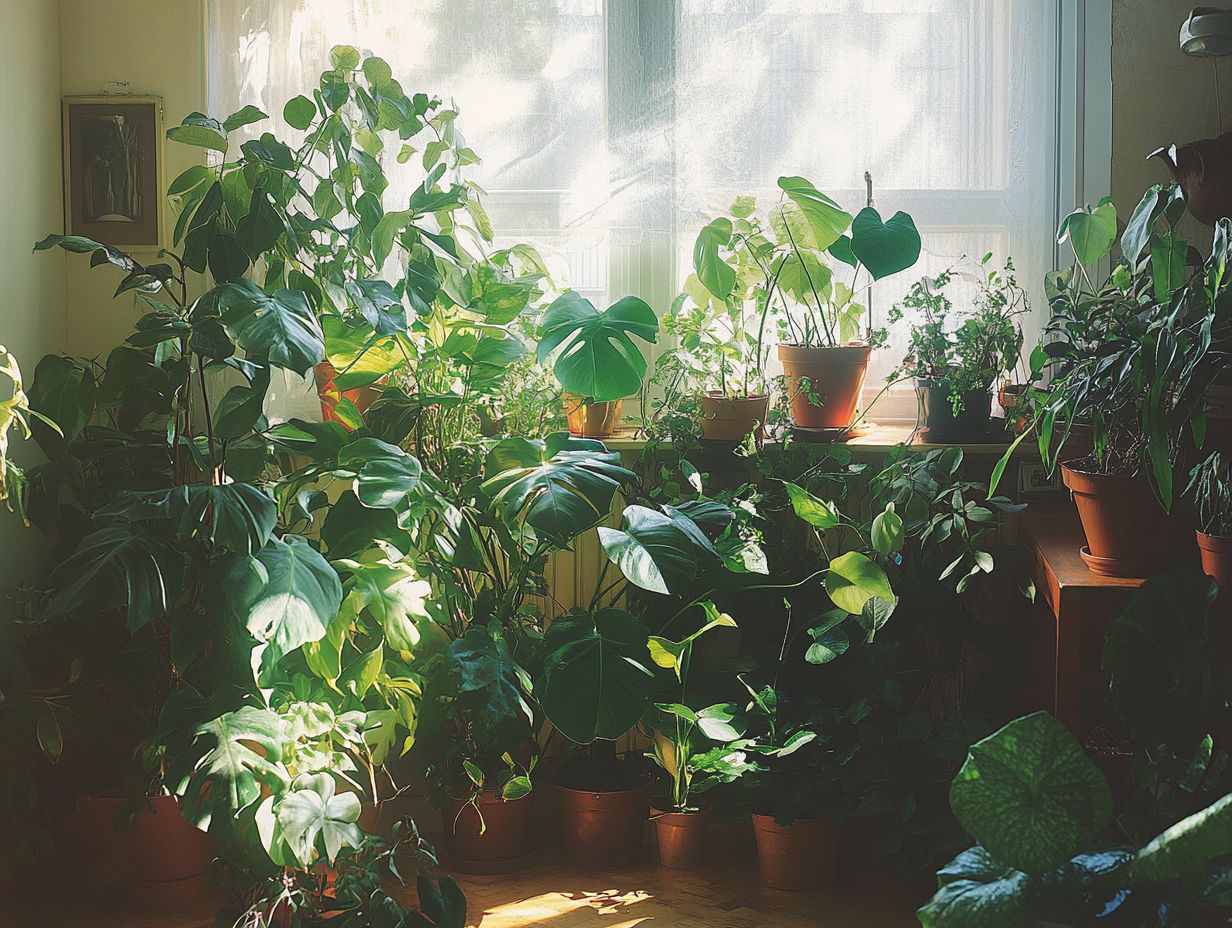
Some common symptoms of indoor plant overcrowding include slowed growth, yellowing leaves, wilting leaves, and a lack of new growth. These signs can also indicate watering issues.
How can I tell if my plants are overcrowded?
You can tell if your plants are overcrowded if they are competing for space or if their leaves are touching or overlapping. Additionally, if the soil is constantly moist and waterlogged, this may lead to potential fungal infections.
Why is overcrowding bad for indoor plants?
Overcrowding can be detrimental to indoor plants due to increased competition for resources, such as water and light. This can result in slowed growth and a weakened immune system, making them more susceptible to disease outbreaks.
What should I do if I notice my plants are overcrowded?
If you notice your plants are overcrowded, gently remove some plants to give them the room they need to flourish. Replant them in a larger pot or separate containers to prevent future pest problems.
If you see black dots or leaf spots, act quickly! These could mean fungal infections that need immediate treatment. Regularly inspect your plants for pest problems like aphids and mealybugs, which can hinder their growth.
Using sanitation tools and gardening techniques will help control disease outbreaks effectively. Recognizing disease symptoms, like wilting and yellowing leaves, helps you take the right steps for plant care.
Can indoor plants recover from overcrowding?
Yes, with proper care and attention, indoor plants can recover from overcrowding. Give them space and watch them thrive!
How can I prevent indoor plant overcrowding?
To prevent indoor plant overcrowding, research the size and growth habits of your plants before purchasing them. Regularly prune and thin out your plants, and repot them into larger containers when needed.
Remember, keeping your plants happy and healthy is worth the effort! Make space for them to thrive today.

